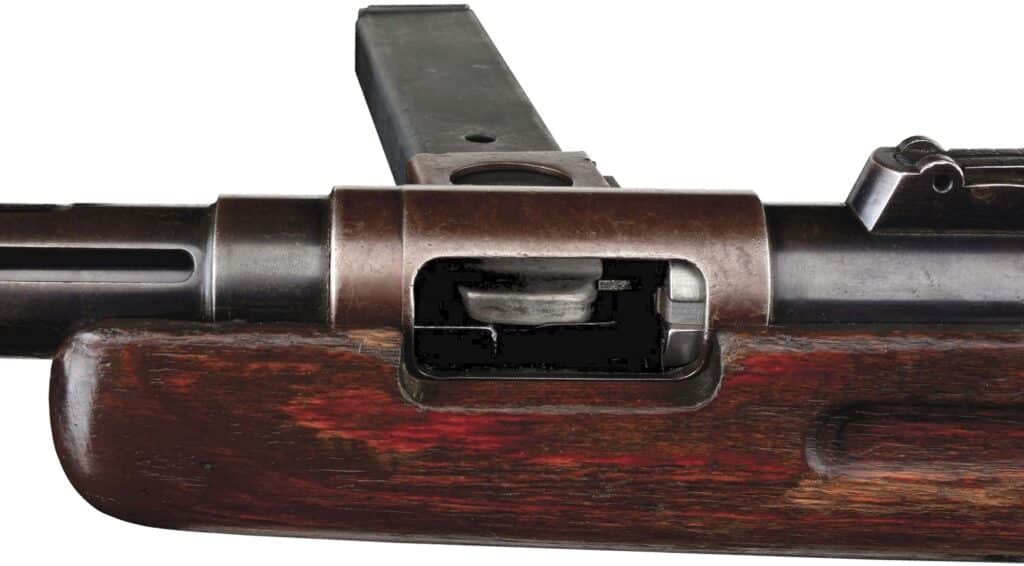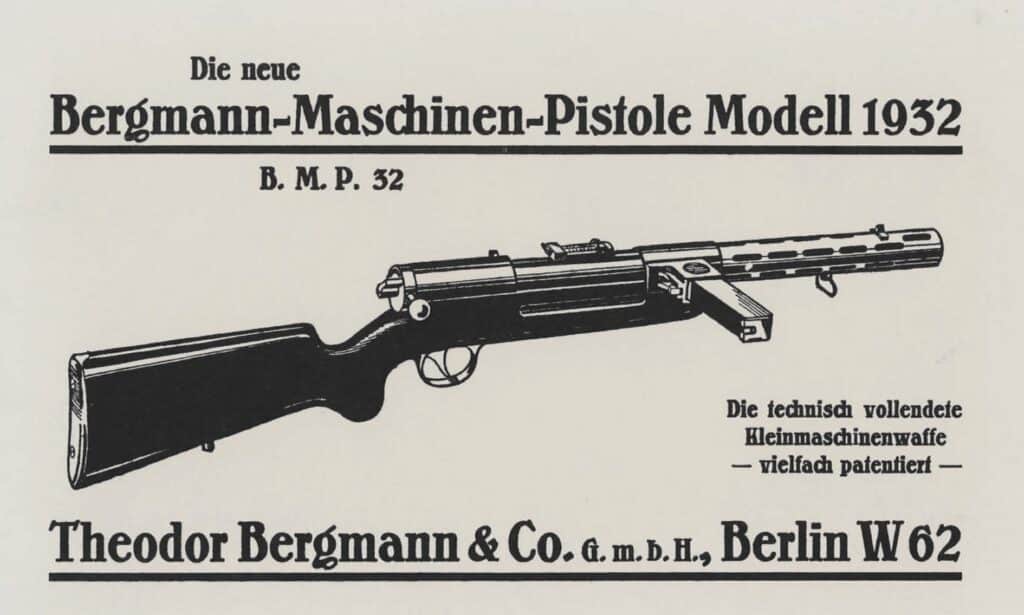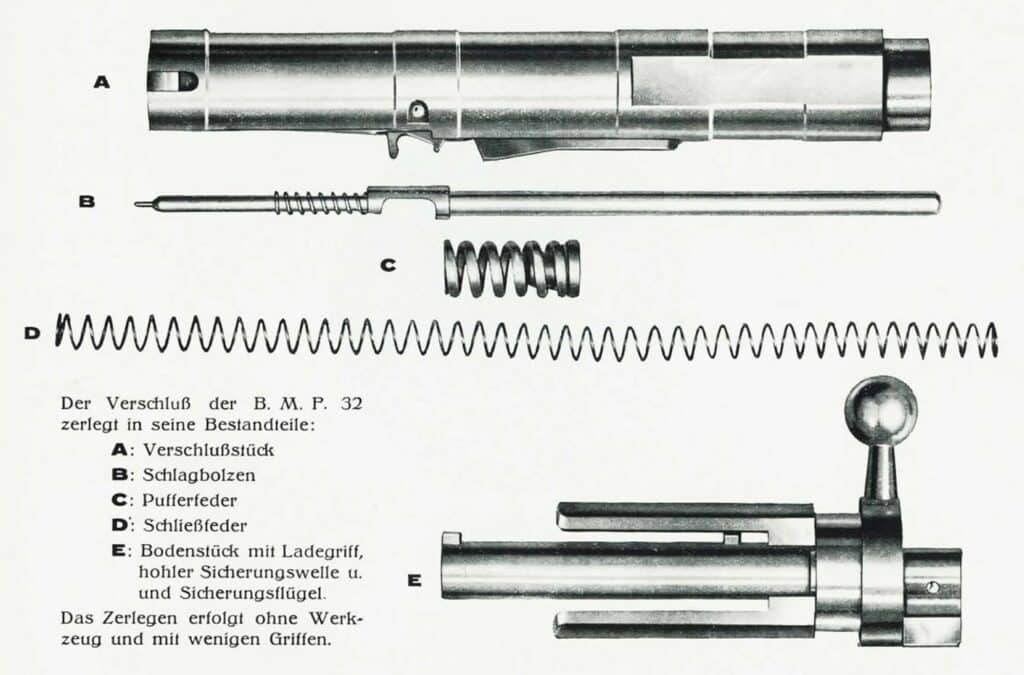By Michael Heidler –
Shortly before the end of World War I, a few thousand pieces of the submachine gun MP18 reached the front. Their striking power was impressive – and ensured that in the Treaty of Versailles the new German Reichswehr was banned from equipping itself with such ‘trench brooms’. Even the development and production of such weapons was no longer permitted to the armaments industry.

In the years that followed, German industry was under constant surveillance by the interallied control commissions. Some companies managed to abscond to neutral foreign countries or set up branches there. The former manufacturer of the MP18, the Suhl-based company Theodor Bergmann, also had to keep its head above water financially in the difficult post-war period and therefore awarded reproduction rights to the Schweizerische Industrie-Gesellschaft (SIG) in Neuhausen in 1920. The gun was successfully marketed worldwide from Switzerland.
The decreasing activity of the control commissions in the following years also gradually brought life back into the armaments industry in the German Reich. Emil Bergmann, the son of the company’s founder Theodor, designed a new model in 1932 based on his many years of experience with the MP18. This was available in two variants, the “Bergmann Maschinenpistole 32-inch (BMP) with a barrel length of 20 cm and the “Bergmann Maschinenkarabiner 32-inch (BMK) with a barrel length of 32 cm. However, there was a lack of production capacity for series production. Bergmann therefore looked for a partner and found one in Denmark: Schultz & Larsen Gevaerfabriken in Otterup produced around 2,000 units. The MP was introduced by the Danish armed forces, among others, in 9mm Bergmann-Bayard caliber.


This model series, with its special bolt design with a noticeable cocking handle, occupies a special position among the German submachine guns of its time. Before firing the first shot, the bolt must be pulled up and to the rear as with a typical bolt-action rifle and then closed again by pushing it forward and turning it. During firing, it remains in the closed position. Also unusual is the magazine well attached to the right side, which makes the weapon easily distinguishable from similar submachine guns. When firing, the special design of the trigger allows the choice of single fire or continuous fire. If the shooter applies light pressure on the trigger, the weapon shoots single fire. If the trigger is pressed hard, the bolt is no longer caught by the sear and the gun fires continuously.

Minor improvements and modifications led to the MP34/I model. Since Bergmann’s own factory was occupied with orders for Bolivia and Siam, the Carl Walther company in Zella-Mehlis took over the other production orders in 1934 in diverse variants such as the calibers 7.63mm Mauser, 7.65mm Parabellum, 9mm Mauser Export, and .45 ACP. The tangent rear sight ranged from 50 to an optimistic 1,000 meters. Further minor modifications resulted in the MP35 model.

In 1938, the strongly growing SS approached Bergmann and bought up all the submachine guns still in stock. In addition, a large order for 45,000 of the current MP35 model was promised. At this time, however, the Wehrmacht had already exhausted all of Bergmann’s and Walther’s capacities with its orders. And so, the company Junker & Ruh in Karlsruhe, an experienced manufacturer of furnaces and tools, was brought on board as a new partner. The new designation of the weapon was now officially MP35/I. The first delivery to the Waffen-SS took place in the spring of 1940. In accordance with the secrecy regulations of the time, the manufacturer’s company name was not allowed to be stamped on it, but only the Junker & Ruh secret manufacturer code “ajf”.

Due to a lack of documents, it has not yet been possible to determine the scope of the order placed. Only 1,800 weapons were delivered by the end of November 1943, after which the order was stopped. The high material and manufacturing costs with milled parts and the complicated bolt assembly was no longer acceptable at this stage of the war. In addition, there was a shortage of sufficiently matured wood for the stocks, which is why various woods in all kinds of brown tones can be found on the MP35/Is. However, since the delivery of the new sheet-metal Sturmgewehr 44 was delayed more and more, Junker & Ruh was allowed to continue production until 1944.

All weapons delivered to the Waffen-SS bear the stamp “SS ZZA1” for SS-Zentralzeugamt 1. The name Zeugamt means ordnance depot. A few weapons without this stamp are said to have been delivered to the German police. Delivery or acceptance lists are not yet known, but based on the serial numbers, the total production quantity is likely to have been around 40,000 pieces.
Not many MP35/I have survived until today and they are very hard to find on the collector market. The attraction of an SS weapon further drives up prices. In the U.S. they regularly reach between $20,000 and $z30,000 dollars. But, well, they are living firing guns.

Technical Data: MP35/I
| Caliber: | 9x19mm | |
| Length: | 840mm | 33.07in |
| Length of barrel: | 200mm | 7.87in |
| Weight (empty): | 4,05kg | 8.9lb |
| Weight (loaded): | 4,73kg | 10.4lb |
| Magazine capacity: | 32 rounds | |
| Rate of fire: | 650 rounds per min |














